Morton’s Neuroma
Updated:
(Also known as Morton’s Interdigital Neuroma, Morton’s Metatarsalgia, Morton’s Neuralgia, Plantar Neuroma, Intermetatarsal Neuroma)
What is a Morton’s neuroma?
Morton’s neuroma is a condition characterized by localized swelling of the nerve and soft tissue located between two of the long bones of the foot (metatarsals – figure 1), which can result in pain, pins and needles, or numbness in the forefoot or toes.
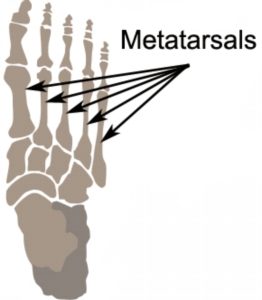
The foot comprises of many small bones, 5 of which are the long bones known as the metatarsals which are situated beside each other (figure 1). Between these bones are nerves (known as the interdigital nerves) which supply the toes.
During certain activities, particularly weight-bearing activities (e.g. walking or running) a compressive force, is sometimes placed on the interdigital nerves and surrounding soft tissue, between the metatarsal bones (this is often the case with tight fitting shoes or in patients with flat feet). If this force is repetitive enough and beyond what the nerve and soft tissue can withstand, swelling to the nerve and soft tissue may occur. This may result in pain, tenderness, pins and needles or numbness in the forefoot or toes. When this happens, the condition is known as a Morton’s neuroma.
A Morton’s neuroma most commonly occurs between the 3rd and 4th metatarsal bones. It is more common in women than men and can sometimes affect both feet at the same time.
Causes of a Morton’s neuroma
A Morton’s neuroma commonly occurs due to repetitive weight bearing activity (such as walking or running) particularly when combined with tight fitting shoes or excessive pronation of the feet (i.e. “flat-feet”). The condition is also more common in patients with an unstable forefoot allowing excessive movement between the metatarsal bones. A Morton’s neuroma can also occur due to certain foot deformities, trauma to the foot, or the presence of a ganglion or inflamed bursa in the region which may place compressive forces on the nerve.
Signs and symptoms of a Morton’s neuroma
Patients with a Morton’s neuroma typically experience a sharp, shooting or burning pain, usually at the base of the forefoot or toes, which radiates into the two affected toes. Sometimes the pain may also radiate into the foot. The pain is often associated with the presence of pins and needles and numbness.
Pain is usually increased by forefoot weight bearing activities (such as running), with narrow-fitting footwear, or with high heeled shoes. It is usually painful to firmly touch the affected region and, in chronic cases, pain and sometimes an audible click, may be heard when squeezing the foot and toes together with the hand. Often a localized area of swelling may be evident at the site of injury.
Diagnosis of a Morton’s neuroma
A thorough subjective and objective examination from a physiotherapist is usually sufficient to diagnose a Morton’s neuroma. Investigations such as an X-ray, ultrasound, MRI, CT scan or bone scan may sometimes be used to assist with diagnosis, assess the severity of the injury and rule out other conditions.
Treatment for a Morton’s neuroma

Members Only ContentBecome a PhysioAdvisor Member to gain full access to this exclusive content. For more details see Become a Member. Already a member? Login Now
Prognosis of a Morton’s neuroma
Patients with a Morton’s neuroma usually make a full recovery with appropriate management. Return to activity or sport can usually take place in weeks to months and should be guided by the treating physiotherapist, podiatrist and / or specialist. In patients with severe or chronic cases which have failed to respond to conservative treatment recovery times may be longer. In these cases, further intervention, such as corticosteroid injections or surgical excision of the neuroma may be indicated.
Contributing factors to the development of a Morton’s neuroma

Members Only ContentBecome a PhysioAdvisor Member to gain full access to this exclusive content. For more details see Become a Member. Already a member? Login Now
Physiotherapy for a Morton’s neuroma

Members Only ContentBecome a PhysioAdvisor Member to gain full access to this exclusive content. For more details see Become a Member. Already a member? Login Now
Other intervention for a Morton’s neuroma

Members Only ContentBecome a PhysioAdvisor Member to gain full access to this exclusive content. For more details see Become a Member. Already a member? Login Now
Exercises for a Morton’s neuroma
The following exercises are commonly prescribed to patients with this condition. You should discuss the suitability of these exercises with your physiotherapist prior to beginning them. Generally, they should be performed 3 times daily and only provided they do not cause or increase symptoms.
Your physiotherapist can advise when it is appropriate to begin the initial exercises and eventually progress to the intermediate and advanced exercises. As a general rule, addition of exercises or progression to more advanced exercises should only take place provided there is no increase in symptoms and provided your physiotherapist has advised you to do so.
Initial Exercises
Foot and ankle up and down
Move your foot and ankle up and down as far as you can go without pain and provided you feel no more than a mild to moderate stretch (figure 2). Repeat 10 – 20 times provided there is no increase in symptoms.
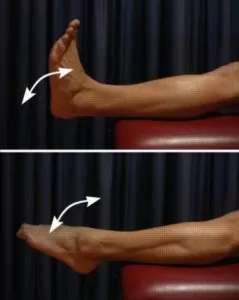
Foot and ankle in and out
Move your foot and ankle in and out as far as you can go without pain and provided you feel no more than a mild to moderate stretch (figure 3). Repeat 10 – 20 times provided there is no increase in symptoms.
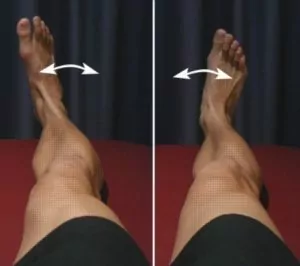
Foot and Ankle Circles
Move your foot and ankle in a circle as large as you can go without pain and provided you feel no more than a mild to moderate stretch (figure 4). Repeat 10 – 20 times in both clockwise and anticlockwise directions provided there is no increase in symptoms.
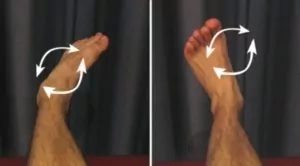
Intermediate Exercises

Members Only ContentBecome a PhysioAdvisor Member to gain full access to this exclusive content. For more details see Become a Member. Already a member? Login Now
Advanced Exercises

Members Only ContentBecome a PhysioAdvisor Member to gain full access to this exclusive content. For more details see Become a Member. Already a member? Login Now
Rehabilitation Protocol for a Morton’s neuroma

Members Only ContentBecome a PhysioAdvisor Member to gain full access to this exclusive content. For more details see Become a Member. Already a member? Login Now
Physiotherapy products for a Morton’s neuroma
Some of the most commonly recommended products by physiotherapists to hasten healing and speed recovery in patients with this condition include:
-
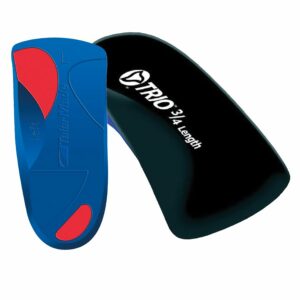 Talar Made TRIO Orthotics (3/4 length)
Talar Made TRIO Orthotics (3/4 length) -
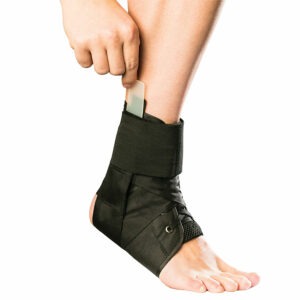 AllCare Ortho Total Ankle Brace (AOA19)
AllCare Ortho Total Ankle Brace (AOA19) -
 Forearm Crutches Adjustable – Standard Grip
Forearm Crutches Adjustable – Standard Grip -
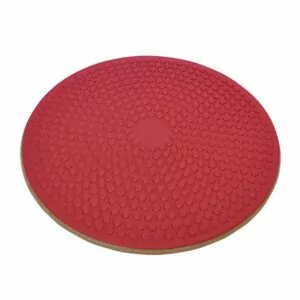 AllCare Wobble Board (Red – ACWOBRD)
AllCare Wobble Board (Red – ACWOBRD) -
 AllCare Band
AllCare Band -
 Premium Strapping Tape 38mm (Victor)
Premium Strapping Tape 38mm (Victor) -
 AllCare Tubing
AllCare Tubing -
 Fixomull Stretch 5cm x 10m
Fixomull Stretch 5cm x 10m -
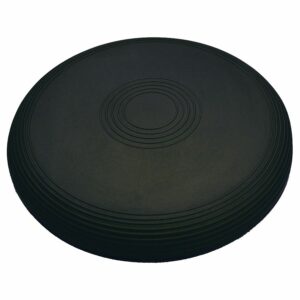 Lournet Stability Dura Disc
Lournet Stability Dura Disc -
 AllCare Ortho Standard Walker (Cam Boot)
AllCare Ortho Standard Walker (Cam Boot) -
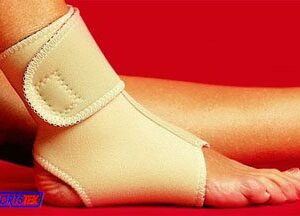 Thermoskin Heat Retaining Ankle Wrap
Thermoskin Heat Retaining Ankle Wrap
To purchase physiotherapy products for this condition click on one of the above links or visit the PhysioAdvisor Shop.
More Exercises
- Ankle Stretches.
- Ankle Strengthening Exercises.
- Leg Stretches.
- Leg Strengthening Exercises.
- Balance Exercises.
 More information
More information
- Arch Support Taping Techniques.
- Read about when to use Ice or Heat
- Learn How to use Crutches correctly.
- View detailed information on initial injury management and the R.I.C.E. Regime
- Read about Correct Footwear.
- Do I Need Orthotics?
- View our Return to Running Program.
- Learn key tips when Returning to Sport.
- View our Foot Diagnosis Guide
 Find a Physio for a Morton’s neuroma
Find a Physio for a Morton’s neuroma
Find a physiotherapist in your local area who can treat a Morton’s neuroma.
Become a PhysioAdvisor Member
-
 Individual Membership (12 Months)$59.95 for 1 year
Individual Membership (12 Months)$59.95 for 1 year -
 Individual Membership (3 Months)$39.95 for 3 months
Individual Membership (3 Months)$39.95 for 3 months -
 Individual Membership (Yearly)$49.95 / year
Individual Membership (Yearly)$49.95 / year -
 Individual Membership (Monthly)$15.95 / month
Individual Membership (Monthly)$15.95 / month

Link to this Page
If you would like to link to this article on your website, simply copy the code below and add it to your page:
<a href="https://physioadvisor.com.au/injuries/foot/mortons-neuroma”>Morton’s Neuroma – PhysioAdvisor.com</a><br/>Get detailed information on Morton's Neuroma including causes, signs and symptoms, diagnosis, treatment, exercises, physiotherapy products and more.
Return to the top of Morton’s Neuroma.

